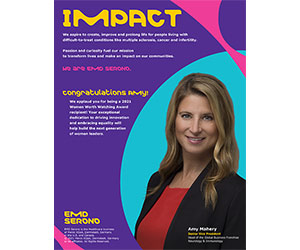by Trevor Wilson
Author and Global Human Equity Strategist
TWI Inc.
“We need someone who is genetically programmed to recognize and avoid serious risks, including those never before encountered. Temperament is also important, independent thinking, emotional stability and a keen understanding of both human and institutional behaviour. i’ve seen a lot of very educated people who have lacked these virtues.” – Warren Buffet
In this quote, legendary investor Warren Buffet is describing his eventual successor. The traits he describes are unlikely to be found on the conventional resume, which typically highlights credentials and technical skills. The overlap between the “right education” and the “right skills” has become the standard way to identify talent and determine the best candidates for recruitment or promotion. But as the quote implies, there could be more.
When Jack Welsh ran General Electric, he would conduct reference checks on people applying to relatively junior management positions. He was looking for intangible traits for future GE leaders, traits so intangible that sometimes he couldn’t even put them into words. What was it that Welsh, Buffet, and other great people-leaders know and see about talent that the rest of us miss? We are answering that question.
As TWI evolves its work in diversity beyond group to the individual, we are focusing on human equity by providing practical tools, which show people-leaders and managers how to maximize on the unique differences of their entire workforce. These tools and templates enable leaders to more strategically position performance management, career development, and succession planning.
One of the most interesting human equity projects we have worked on was for a construction company. Annually they awarded the “builder-of-the-year” in a very public, prestigious event. Each candidate was nominated from eight regions across the country based on their projects. I asked the CEO if he knew what trait would be common among each of the eight finalists, i.e., what makes a great builder. He thought about it for a while. After a few minutes he said, “I really don’t know for sure.” I asked him if he would like to find out. Using a couple of tools, we managed to quickly isolate the trait that ran through all eight of the builders. This trait, called harmony, had never been written on their resumes or their corporate profile. The CEO was shocked to find out that this so-called intangible strength had never been written in a job ad, position description, or succession plan.
How do we really identify great talent? Enter the human equity talent model called SHAPE V.
SHAPE V is an acronym that stands for the following:
- “S” stands for Strengths, the innate traits individuals have.
- “H” stands for Heart, i.e., the passion people have for certain activities.
- “A” stands for a person’s Attitude towards work.
- “P” stands for Personality.
- “E” stands for Experience, not the technical experience usually reviewed, but the unique, diverse life experience.
- “V” stands for Virtue or how a person lives their values.
This model allows us to put a label on the intangible attributes of talent. It seeks to put into words what great people leaders have always intuitively perceived about high potential talent. The French sometimes call it the “je ne sais quoi.” By adding the intangibles to the talent discussion, we may be very surprised about the shape talent actually takes, and the talent we miss.
In 1996 Trevor started TWI Inc. to specialize in the area of equity and diversity as a business issue. In the same year, Trevor published a highly acclaimed book entitled Diversity at Work: The Business Case for Equity. The firm’s clients include some of the most progressive global employers. TWI’s Human Equity™ approach was instrumental in catapulting Coca-Cola’s South African division to the top performing division worldwide.
Visit www.twiinc.com for more information.






